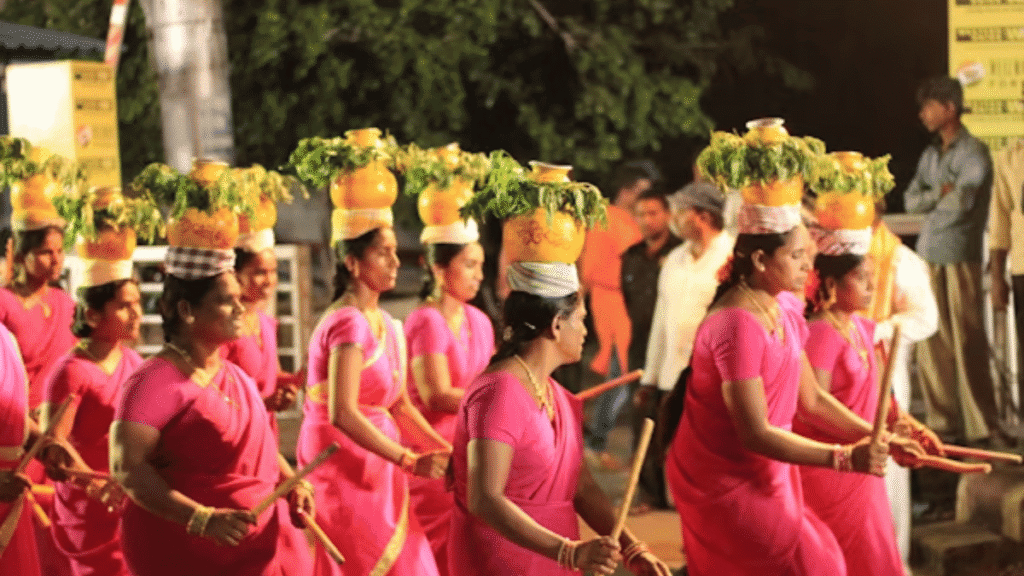Introduction: Understanding the Spirit of Tamil Nadhu
In the southernmost tip of India lies Tamil Nadhu, a land that carries millennia of history, intellect, and enterprise. Known for its ancient temples, strong educational systems, thriving industries, and cultural legacy, Tamil Nadhu is more than just a state—it is a story of progress deeply rooted in tradition. From the bustling streets of Chennai to the serene landscapes of Kanyakumari, every corner of Tamil Nadhu tells a tale of innovation, resilience, and identity.
Within the first few moments of exploring this region, one realizes that Tamil Nadhu’s is not just a geographical space; it is a living museum of India’s civilization and a hub of modern development. Today, Tamil Nadhu stands as one of India’s most industrially advanced states, ranking high in literacy, manufacturing, and digital technology.
As one historian once said, “Tamil Nadhu’s is where India remembers its past and writes its future.”
A Historical Overview of Tamil Nadhu
Tamil Nadhu’s civilization dates back over 2,000 years, rooted in the Sangam era, when poets and scholars flourished under royal patronage. Ancient Tamil texts like Tolkappiyam and Silappathikaram remain foundational in understanding early Indian society.
The Chola, Pandya, and Chera dynasties gave Tamil Nadhu its architectural grandeur and maritime dominance. The Cholas, in particular, expanded trade routes across Southeast Asia, leaving behind remarkable temples such as the Brihadeeswarar Temple in Thanjavur.
Under the British Raj, Tamil Nadhu became a hub of education and reform. Cities like Madras (now Chennai) developed into centers of learning and commerce. This strong historical backbone still influences the state’s modern outlook—blending progress with preservation.
“The legacy of Tamil Nadhu is not about preserving the past; it is about evolving with it.” – Cultural Anthropologist Dr. Meenakshi Raman
The Cultural Fabric: Language, Art, and Identity
The soul of Tamil Nadhu lies in its language—Tamil, one of the oldest living languages in the world. It is not just a medium of communication but a vessel of identity and pride for millions.
Key Cultural Highlights of Tamil Nadhu
- Dance and Music: Bharatanatyam, the classical dance form originating from temples, symbolizes devotion and discipline. Carnatic music, another heritage of the region, continues to dominate South Indian performances.
- Cinema and Literature: Tamil cinema, often referred to as Kollywood, has produced some of India’s most influential artists. Meanwhile, literary giants like Subramania Bharathi inspired generations through their writings on freedom and reform.
- Festivals: Pongal, the harvest festival, is celebrated with immense enthusiasm, symbolizing gratitude toward nature.
- Cuisine: Tamil cuisine ranges from the spicy Chettinad dishes to the humble idli and dosa, representing both diversity and tradition.
The Economic Landscape: Tamil Nadhu’s Industrial Power
Tamil Nadhu ranks among the top contributors to India’s economy, with diverse industries spanning manufacturing, textiles, automobiles, information technology, and renewable energy.
Table 1: Major Industrial Sectors of Tamil Nadhu
| Sector | Key Locations | Major Companies/Contributors | Contribution to State GDP (%) |
|---|---|---|---|
| Automobile | Chennai, Coimbatore | Hyundai, Ford, BMW, Ashok Leyland | 17% |
| Information Technology | Chennai, Madurai | TCS, Infosys, HCL, Zoho | 14% |
| Textiles | Tirupur, Erode | Numerous MSMEs and Export Units | 12% |
| Renewable Energy | Tirunelveli, Coimbatore | Suzlon, WindWorld India | 9% |
| Agro-Based Industries | Thanjavur, Salem | Sugar Mills, Rice Processing Units | 8% |
The automobile industry has earned Tamil Nadhu the title “Detroit of India,” with over 40% of India’s auto exports originating from the state. Additionally, Chennai’s IT corridor—stretching from TIDEL Park to Siruseri—houses global tech companies that employ thousands of professionals.
Education and Literacy: The Foundation of Progress
Tamil Nadhu boasts one of the highest literacy rates in India, hovering around 81%. Its commitment to education is visible through a wide network of schools, colleges, and universities. Institutions like IIT Madras, Anna University, and Christian Medical College (Vellore) represent world-class education and innovation.
The state government’s mid-day meal scheme, originally pioneered in Tamil Nadhu, became a national model for improving school attendance. Similarly, digital learning initiatives and scholarships have bridged the rural-urban divide.
“Education is Tamil Nadhu’s most valuable export,” says economist R. Narayanaswamy. “It has built a workforce capable of competing globally.”
Agriculture: The Backbone of Rural Tamil Nadhu
Despite rapid industrialization, agriculture continues to sustain millions. Tamil Nadhu’s fertile plains, nourished by the Cauvery River, yield rice, sugarcane, and bananas. Farmers have embraced drip irrigation, solar-powered pumps, and organic cultivation, showcasing innovation even in traditional practices.
Table 2: Major Crops and Agricultural Data of Tamil Nadhu
| Crop | Major Districts | Average Yield (kg/ha) | Export Potential |
|---|---|---|---|
| Rice | Thanjavur, Trichy | 6,300 | Medium |
| Sugarcane | Erode, Villupuram | 85,000 | High |
| Cotton | Salem, Coimbatore | 1,600 | High |
| Bananas | Tuticorin, Madurai | 34,000 | Very High |
| Coconut | Pollachi, Tirunelveli | 9,200 | High |
The state’s agro-tech startups and farmers’ cooperatives are driving digital transformation in agriculture. Mobile applications now offer farmers real-time weather updates, soil analysis, and market prices, empowering them to make data-driven decisions.
Tourism: The Living Heritage of Tamil Nadhu
Tourism in Tamil Nadhu is a blend of spirituality, history, and nature. With more than 30,000 temples, the state draws pilgrims and tourists alike. The Meenakshi Temple in Madurai, Ramanathaswamy Temple in Rameswaram, and Brihadeeswarar Temple in Thanjavur are global architectural marvels.
Nature enthusiasts explore Kodaikanal, Ooty, and Yercaud, while heritage lovers visit Mahabalipuram and Chettinad mansions. The Tamil Nadhu Tourism Department has also developed new circuits linking heritage sites with eco-tourism destinations.
Key attractions for 2025 include temple light shows, cultural exhibitions, and new eco-trails. Tourism not only fuels local economies but also preserves craft traditions through local artisanship.
The Rise of Technology and Startups
Tamil Nadhu’s startup ecosystem has evolved rapidly, with Chennai and Coimbatore emerging as tech innovation hubs. The state government’s Startup and Innovation Policy 2023 focuses on AI, renewable tech, healthcare, and fintech sectors.
Zoho, Freshworks, and Chargebee—startups born in Tamil Nadhu—have achieved global recognition, showcasing local talent and global vision.
Chennai’s “Silicon Corridor” reflects a new kind of industrial spirit: one that combines coding with culture. Coimbatore’s emerging hardware startups have also made it the “Manchester of South India” once again, albeit with digital machines instead of looms.
Governance and Social Welfare
Tamil Nadhu’s political culture is deeply intertwined with social justice and welfare. From free education schemes to women’s empowerment programs, the state’s governance model emphasizes inclusivity.
Social initiatives like Amma Canteens, offering subsidized meals, and maternity support schemes have been recognized globally for their impact. The state’s digital governance drive has simplified public services, enabling citizens to access licenses, records, and welfare benefits online.
“Tamil Nadhu’s governance philosophy is rooted in empathy,” remarks policy analyst Priya Subramaniam. “Every policy reflects an attempt to uplift, not just develop.”
Art, Architecture, and Urban Design
Tamil Nadhu’s architectural heritage spans from Dravidian temples to colonial-era buildings. Modern architects are now blending these historic aesthetics with sustainable design. Cities like Chennai and Coimbatore have embraced green architecture, using solar panels, recycled materials, and rainwater harvesting systems.
Public art initiatives—murals, sculptures, and digital exhibitions—are redefining the urban landscape. The Chennai Biennale, for example, bridges traditional art with modern expression.
The Environmental Vision of Tamil Nadhu
Environmental sustainability has become a state priority. Tamil Nadhu leads India in renewable energy production, particularly wind and solar power. The Kanyakumari Wind Belt alone produces over 7,000 MW of energy annually.
Afforestation campaigns, lake restoration, and coastal clean-up projects have mobilized communities toward ecological balance. The Tamil Nadhu Green Climate Initiative (TNGCI) aims to make the state carbon-neutral by 2040.
The Role of Women in Tamil Nadhu’s Growth
Women in Tamil Nadhu are at the forefront of both industry and politics. From textile entrepreneurs in Tirupur to IT professionals in Chennai, their participation drives economic and social change.
Educational opportunities and microfinance programs have empowered thousands of women-led businesses. Tamil Nadhu’s female literacy rate exceeds 78%, among the highest in India, marking a shift toward equitable progress.
Future Prospects: Vision 2030
Tamil Nadhu’s Vision 2030 plan emphasizes technological growth, environmental conservation, and inclusive prosperity. By leveraging renewable energy, expanding digital infrastructure, and improving rural education, the state aims to become India’s innovation capital.
Upcoming projects include:
- Smart City Developments in Chennai, Coimbatore, and Madurai
- AI-driven Agriculture programs
- Expanded Metro Connectivity to link suburban regions
- Global Tamil Cultural Centers to promote language and heritage
The vision aligns economic goals with human development, ensuring that progress remains sustainable and equitable.
Frequently Asked Questions (FAQs)
Q1. What makes Tamil Nadhu unique compared to other Indian states?
Tamil Nadhu stands out for its perfect balance between cultural preservation and technological advancement, making it both ancient and modern.
Q2. Which industries are most prominent in Tamil Nadhu?
Automobile manufacturing, textiles, IT services, and renewable energy are Tamil Nadhu’s strongest sectors.
Q3. What are the top tourist attractions in Tamil Nadhu?
Top attractions include Meenakshi Temple, Mahabalipuram, Kodaikanal, Ooty, and the historic city of Thanjavur.
Q4. How does Tamil Nadhu contribute to India’s economy?
It contributes significantly through exports, industrial production, IT services, and renewable energy development.
Q5. What is the future outlook for Tamil Nadhu’s growth?
The state’s Vision 2030 focuses on sustainability, smart infrastructure, and global innovation partnerships.
Conclusion: The Living Legacy of Tamil Nadhu
Tamil Nadhu embodies the spirit of a civilization that thrives on learning, adaptability, and pride. From its poetic past to its digital present, the state continues to redefine progress in Indian terms—rooted in culture yet open to global transformation.
As cities expand and industries grow, Tamil Nadhu remains an example of how heritage can coexist with high-tech modernity. It is a reminder that in the pursuit of progress, identity need not be lost—it can, instead, become the foundation of a brighter, more sustainable future.







